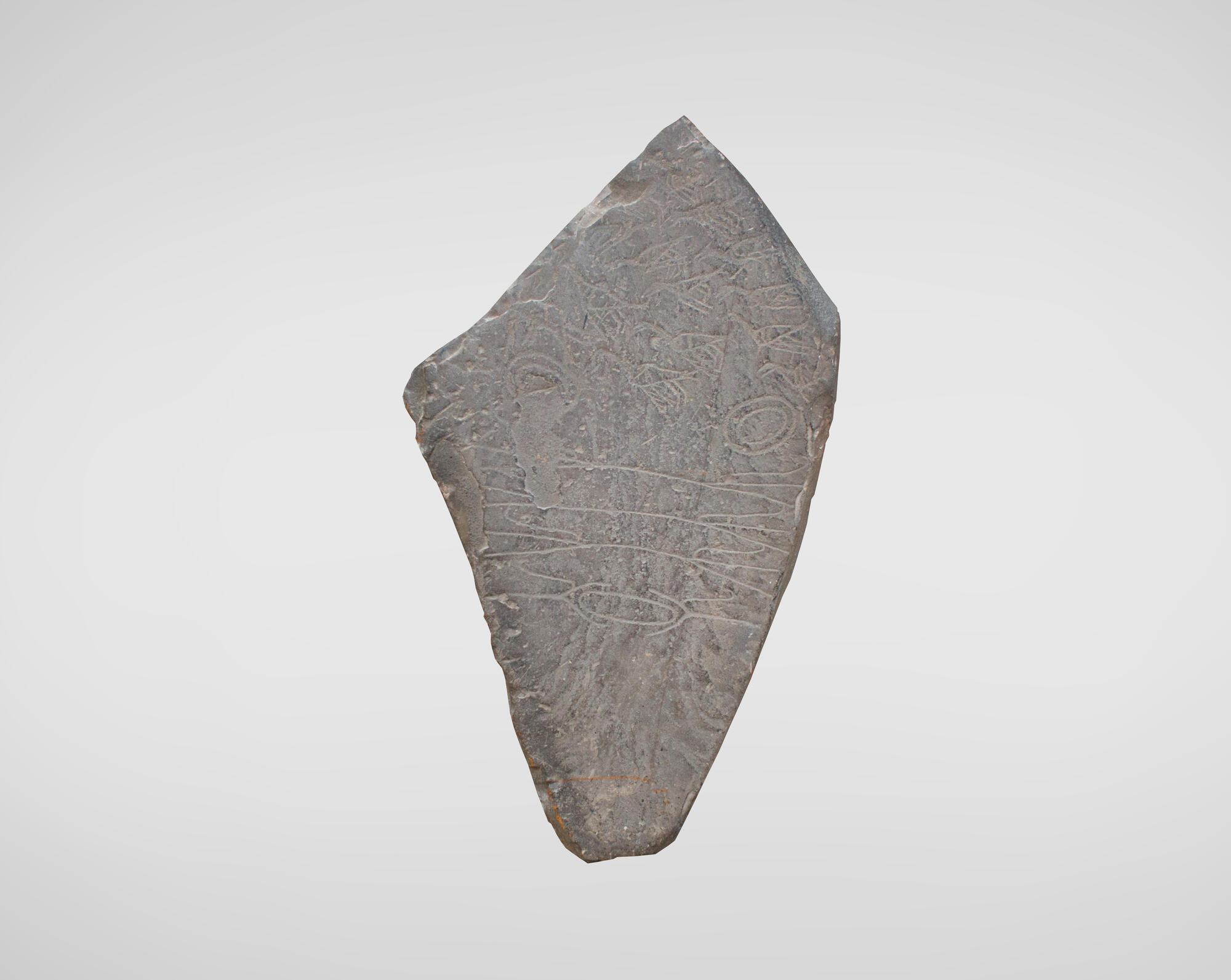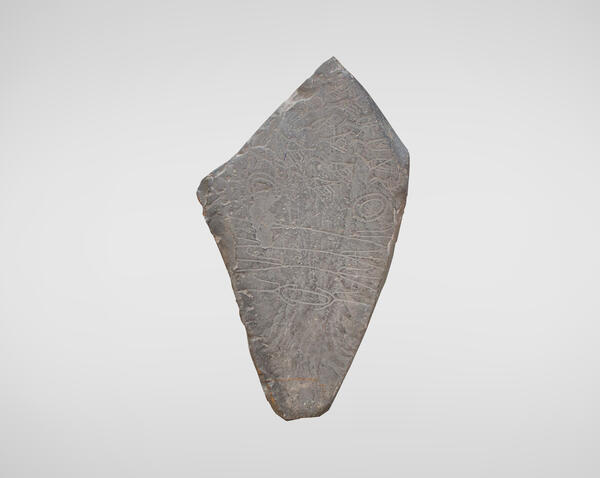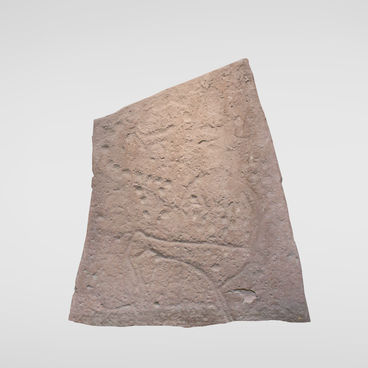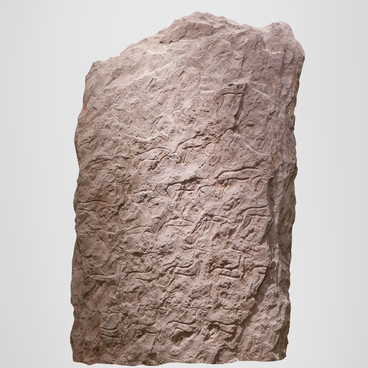A stone slab measuring 91×53×8 centimeters was found in 1952 by the archaeologist of the Khakassia National Museum, Albert Lipsky. It was located near the mouth of the Butrakhta River in the Tashtyp district. The place where the scientist discovered the slab has preserved traces of the site, although it was plowed many times. Lipsky found there the remains of coal and ash from a fireplace, burnt boulders and burnt animal bones. The archaeologist took the slab to the museum, and there it was included in the permanent exhibition.
The stone has the shape of a rhombus, the upper corner of which is sharp, and the lower one is obtuse. The carver inscribed the image of a human face in this shape, and also slightly worked the edges of the slab to emphasize his intention: in the area of the chin of the mask it narrows, at the forehead it expands.
The image on this slab refers to the late stage of the Okunev archaeological culture — the end of the 3rd or the beginning of the 2nd millennium BC. Late Okunev petroglyphs are found on wide stone stelas and rocks along the riverbanks. Unlike earlier drawings, this type is found only in the southern part of the Minusinsk Basin. Then the masks were characterized by the absence of clear contours. Perhaps in this way the ancient artists sought to convey the idea that deities can take the form of people, but do not have a permanent physical body.
In the widest part of the face, there are two eyes, each of which is designated by two concentric ovals. Three transverse lines are depicted below them, each bifurcating at the ends like a snake tongue. Below them is an oval mouth, along the edges of which lines with the same forks are carved.
Scientist Leonid Kyzlasov, after whom the Khakass National Museum of Local History bears his name, suggested that the cross lines on the faces symbolized the traditional division of the world into three parts: Upper, Middle and Lower. Khakass in ancient times believed that good gods live in the Upper world, and evil forces live in the Lower world. The middle world belonged to people and those spirits that lived among them.
In the area of the forehead of the mask, the ancient master depicted a flock of flying black grouses. They are easily recognizable by their characteristic features: the position of the wings and the tail curls in the form of a lyre, which distinguish males from females. Perhaps this image had a ritual meaning, and with its help the artist tried to attract good luck in the hunt and rich prey.
The stone has the shape of a rhombus, the upper corner of which is sharp, and the lower one is obtuse. The carver inscribed the image of a human face in this shape, and also slightly worked the edges of the slab to emphasize his intention: in the area of the chin of the mask it narrows, at the forehead it expands.
The image on this slab refers to the late stage of the Okunev archaeological culture — the end of the 3rd or the beginning of the 2nd millennium BC. Late Okunev petroglyphs are found on wide stone stelas and rocks along the riverbanks. Unlike earlier drawings, this type is found only in the southern part of the Minusinsk Basin. Then the masks were characterized by the absence of clear contours. Perhaps in this way the ancient artists sought to convey the idea that deities can take the form of people, but do not have a permanent physical body.
In the widest part of the face, there are two eyes, each of which is designated by two concentric ovals. Three transverse lines are depicted below them, each bifurcating at the ends like a snake tongue. Below them is an oval mouth, along the edges of which lines with the same forks are carved.
Scientist Leonid Kyzlasov, after whom the Khakass National Museum of Local History bears his name, suggested that the cross lines on the faces symbolized the traditional division of the world into three parts: Upper, Middle and Lower. Khakass in ancient times believed that good gods live in the Upper world, and evil forces live in the Lower world. The middle world belonged to people and those spirits that lived among them.
In the area of the forehead of the mask, the ancient master depicted a flock of flying black grouses. They are easily recognizable by their characteristic features: the position of the wings and the tail curls in the form of a lyre, which distinguish males from females. Perhaps this image had a ritual meaning, and with its help the artist tried to attract good luck in the hunt and rich prey.



